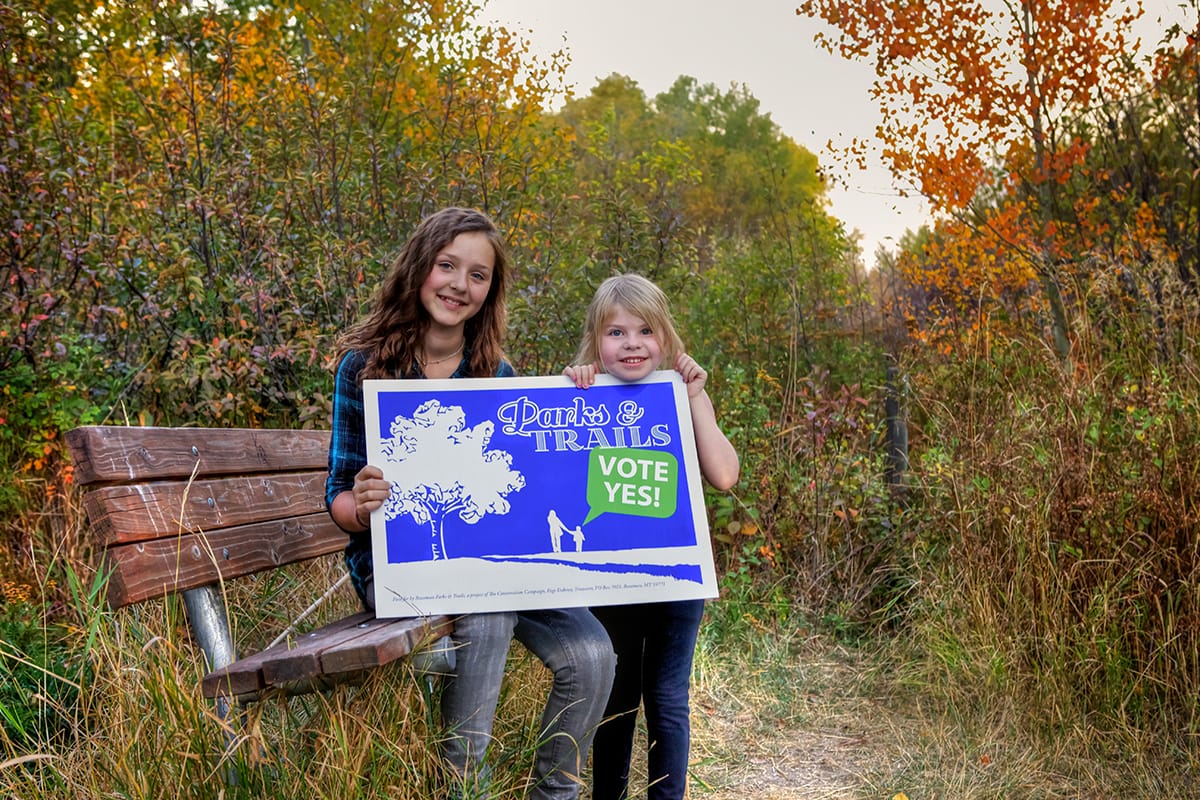
Secrets of the Private Sector: Marketing Parks
Secrets of the Private Sector: Marketing Parks
How parks and recreation agencies can flex their marketing muscles
If you ran a business that controlled hundreds of millions of dollars worth of prime real estate, scenic walking trails, elegant gardens, boating basins, ice rinks, outdoor performance venues, forests, and fields, you’d probably want people to know about it. But scores of institutions with this kind of resource wealth do almost nothing to promote what they’ve got. They are America’s big-city park and recreation departments—from Boston to Los Angeles to Honolulu.
According to a survey by The Trust for Public Land’s Center for City Park Excellence, almost half of the nation’s largest park departments do not spend any money on public outreach. Counting those that do, the average amount spent on marketing comes to only 46 cents per resident per year.
“Here we’ve got an obesity crisis of huge proportions, and we’ve also got amazing recreational resources right among us in our cities, yet we aren’t aggressively promoting them to the general public,” said Geof Godbey, Carl Edwards emeritus professor of recreation, park, and tourism management at Pennsylvania State University.
Why the missed opportunity?
For starters, the issue is fraught with confusing political and economic cross-currents. Is it appropriate to promote parks? Aren’t they just “there” for the using? Aren’t some of them already overrun? Is it weird to advertise something that is already perceived as fun? Should the government be spending taxpayer money telling people what to do? Can an agency justify promoting something that’s not an obvious money-maker?
But the economics of park promotion are subtle and complex, particularly when they intersect with the economics of public health. According to the Centers for Disease Control and Prevention, 30 percent of Americans are fully sedentary. They are not all obese, of course, but lack of exercise is certainly a risk factor for being overweight. On average, an obese American racks up nearly $1,500 more per year in health care costs than an American of normal weight, for a national total of $147 billion in direct medical expenses.
Urban park facilities are a resource for city-dwellers to be active. They can be amplified with programming that increases intensity, maintains continuity, builds a supportive community of participants, adds a feeling of safety, and much more. As Jason Cissell, administrator of community relations of Louisville Metro Parks puts it, “we’re the largest gym in the city, and we’re free!” But the system only works if people know about it. Although the best vehicle is word-of-mouth, a 2002 study for the American Journal of Preventative Medicine showed that community-wide fitness campaigns also help by succeeding in encouraging, on average, 4.2 percent of residents to begin engaging in regular physical activity.
If even one in ten of those newly active people transitions from obesity to a healthy weight, medical costs would fall by $6.30 for each man, woman and child in that city per year. In Washington, D.C., with 600,000 residents, that translates to $3.7 million—an amount that dwarfs what is spent on park marketing in Washington. In fact, that is more than the country’s largest park marketing budget, the $2.7 million spent by the Chicago Park District (for a city of 2.8 million people). Compared to expected benefits, every city park marketing effort in the country is underfunded.
Think like a gym
Gyms, which are the private-sector counterparts to public park systems, have become increasingly popular in the past two decades. Capitalizing on the market for physical activity, gyms have steadily increased their advertising expenditures. As a result, the number of American gym memberships increased by 40 percent between 1998 and 2008. Bally Total Fitness, which is among the largest of publicly traded gyms, spent 8 percent of its annual revenues on advertising in 2007. (Financial records are not available from privately held companies such as Gold’s Gym.) By comparison, the average city park system spends 0.3 percent of its budget on marketing.
Of course, marketing a profit-driven, private-sector company is quite different from promoting a public, government-operated resource. On the private side, the goal is the highest possible revenue after subtracting expenses, even if that means overlooking many potential customers—or, as the Small Business Administration instructs entrepreneurs new to marketing, “Profitable sales volume is more important than maximum sales volume.” Private gyms follow this profit-driven logic, focusing on a particular niche: those with the physical stamina and financial ability to join. Typically, these are people with above-average income between the ages of 18 and 65.
Park agencies, in contrast, are pedaling uphill and into the wind. To successfully affect public health, the departments must persuade those who are sedentary or overweight to become active in parks. But reaching this least likely group is not inexpensive, and some agencies make the most of their squeezed budgets by focusing on subgroups. In Phoenix, knowing that 80 percent of its recreation program participants have attended a program in the past, the Department of Parks and Recreation cuts costs by mailing activity catalogues only to previous participants and other likely park users. This protects the budget but keeps the habitually unfit shut out of information they could use. (The agency does make modest additional outreach efforts in certain targeted neighborhoods.)
Since no city park department has sufficient resources to market its lands and programs the old-fashioned way with mailings and print ads, there is an inexorable transition to lower-cost strategies such as websites, social-media platforms, and email alerts. Social sites such as Twitter, Facebook, and Myspace are effective at reaching teens and young adults, but are notoriously limited in scope, reaching only voluntary users—and they may have less impact than often believed. In Charlotte, N.C., the Mecklenburg County Parks and Recreation Department’s mascot, “Ray,” a grinning sun in jean shorts and high-top sneakers who updates his Facebook fans several times a week on upcoming park events, had, at the time of this writing, only 64 fans. The new media represent a new opportunity for resource-limited park departments, but they aren’t yet a truly viable solution— and are often inaccessible to the poor and the elderly, to boot. (Approximately 30 percent of Americans do not have a computer.)
New York City’s Department of Parks and Recreation uses both approaches. The agency has a 150,000-person email database but supplements its online advertising with print media (although recent budget cuts reduced direct-mail funds from $100,000 to $50,000). The department has attempted to compensate by launching “BeFitNYC,” a website and search engine that enables people to find facilities locations and program activities.The site was viewed 140,000 times in the first two months of 2010.
In July 2009, San Antonio, Texas, launched a marketing campaign that must have set a record for frugality. The citywide, multimedia “Get Active. Get Fit. Step Up to Recreation.” campaign cost only $28,000, thanks to the use of public service placement rather than paid advertising and the use of city officials and local athletes instead of paid actors. To stir excitement the department used prizes as rewards, handing out free “Step Up to Recreation” water bottles and t-shirts. But since there’s no money to count users, it’s not known if the campaign actually increased park use or fitness.
Get a partner
The truth is that marketing parks is too difficult, too expensive and too important to be left only to park and recreation agencies. The effort needs and deserves to be a partnership between the parks community—with its land and facilities—and the health community—with its science, its funding, and its outreach.
A few of these partnerships do exist, but they are challenging enough to require strong leadership from above. In Louisville, where Mayor Jerry Abramson was determined to combat Louisville’s high levels of obesity and inactivity, Metro Parks joined with the Department of Health and Well-Being to launch the “Healthy Hometown Movement” in September 2009. The citywide initiative encourages citizens to get 30 minutes of physical activity at least five times per week. The health department, going further to focus on the eight neighborhoods with the most serious obesity-related risks, granted Metro Parks $25,000 to provide free fitness classes in recreation centers. “The coordination between departments has been great,” said Kendria Rice-Locket, program coordinator. “It’s helped us realize we’re all working toward the same goal.”
The powerful and well-heeled insurance industry has not yet done much cross-marketing with parks, but United Healthcare may be the harbinger of a new approach. In April 2010 the Minnesota-based national company announced an unusual outcome-based partnership with the YMCA. The Y now offers free, intensive, 16-week weight-loss courses for United Healthcare members in seven pilot cities, including Minneapolis; Cincinnati, Ohio and Phoenix, Arizona. The company compensates participating Ys based on the number of participants and the amount of weight they collectively lose. All members are eligible, but, using proprietary data, United Healthcare specially tells those who may be pre-diabetic about the program. This sophisticated targeting strategy reaches out to the unfit but also allows United Healthcare to capture the medical cost savings achieved.
Meanwhile, United Healthcare has partnered with the City of Denver, Colorado, to advertise parks. The company gave the Department of Parks and Recreation $60,000 to print and distribute 75,000 copies of its programming guides, more than three times the number printed in 2008. In addition to recreation centers, libraries, and the Sunday Denver Post, the guides are distributed in United Healthcare offices.
With Colorado boasting the lowest obesity rate in the nation, it is either ironic or emblematic that this kind of partnership is coming out of Denver. Regardless, it is the kind of creativity that park departments, health departments and mayors will increasingly utilize in the future. According to The Trust for Public Land’s analysis of 2008 (the most recent year available), the marketing budgets of city park agencies fell by another 11 percent.
Peter Harnik is director of The Trust for Public Land’s Center for City Park Excellence and author of Urban Green: Innovative Parks for Resurgent Cities (Island Press). Elissa Hoagland, a recent graduate of Brown University, was an intern with the center. Research for this article was funded in part by the National Heart, Lung, and Blood Institute, contract # R01HL083869.
This article originally appeared in the August 2010 issue of Parks&Recreation magazine.
One-third of Americans, including 28 million children, lack safe, easy access to a park within a 10-minute walk of home. Urge your senators to pass the Outdoors for All Act to create parks and enhance outdoor recreational opportunities!


Donate to become a member, and you’ll receive a subscription to Land&People magazine, our biannual publication featuring exclusive, inspiring stories about our work connecting everyone to the outdoors.
See how our supporters are helping us connect people to the outdoors across the country.











